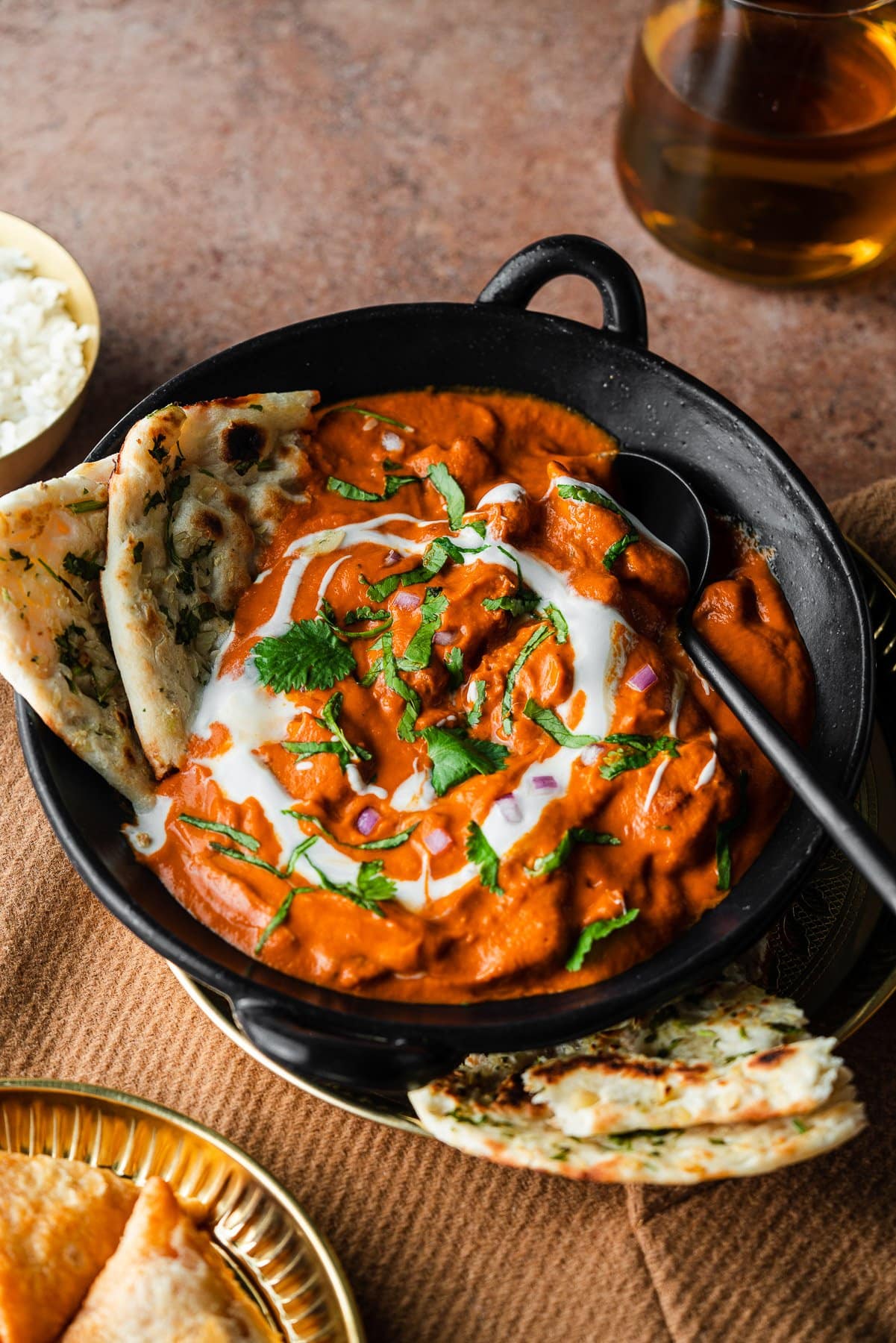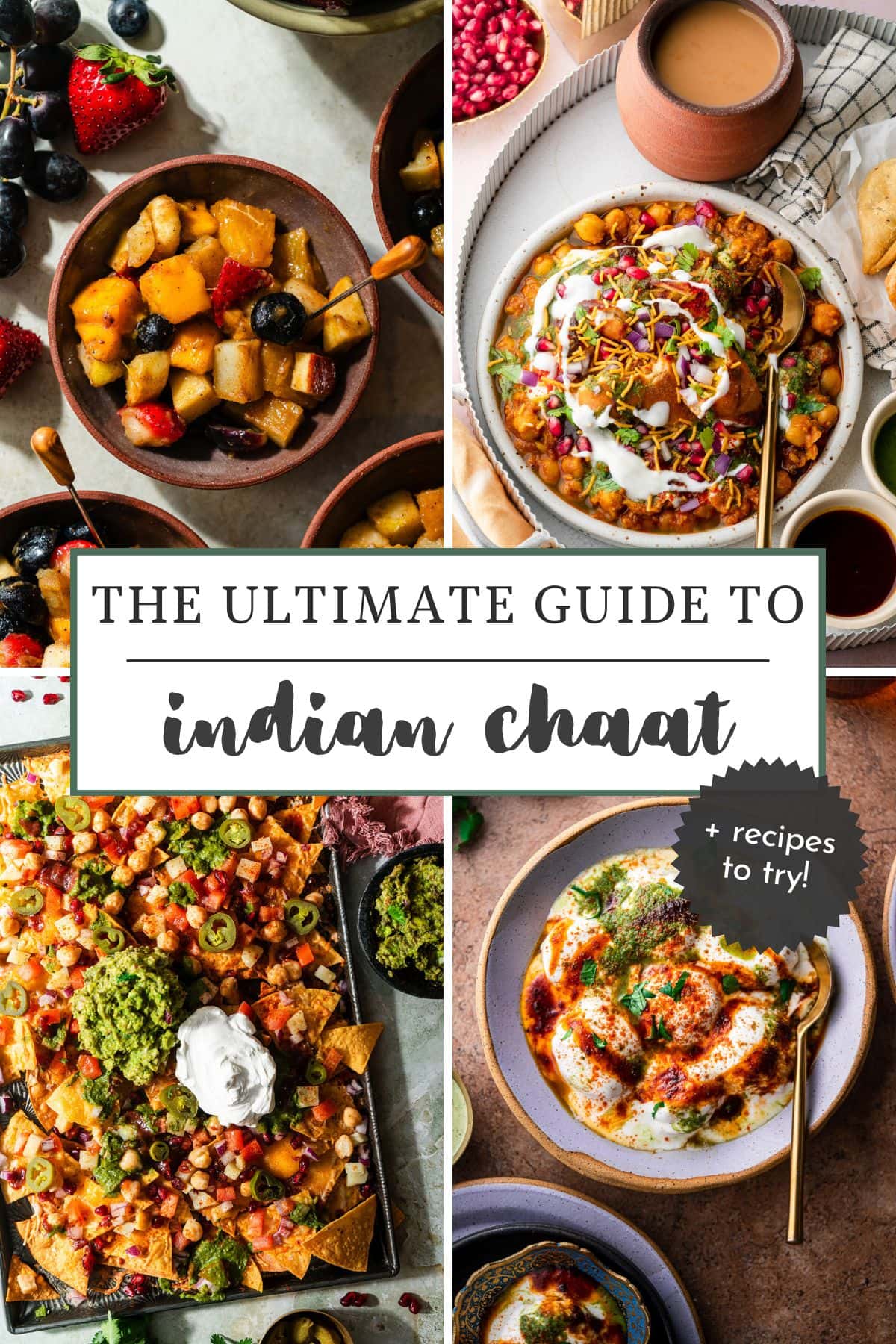Add Ginger Garlic Paste to your arsenal of Indian cooking essentials and basics. This paste is made in just 20 minutes with 3 ingredients - fresh ginger, fresh garlic, and a splash of oil - and no special equipment. Keeping it in your fridge makes it super convenient when preparing Indian curries, sabjis, and marinades!

One of my favorite things to keep in my fridge for Indian cooking is Ginger Garlic Paste, or as I like to call it - gigi paste! It's quick and convenient when making curries to grab a spoonful and add it while I'm sautéing onions or blooming spices.
Some store-bought Ginger Garlic Pastes will often have added ingredients like oil, preservatives, salt, vinegar, etc. Making it at home ensures a preservative free paste that's fresh and full of flavor for your Indian cooking.
It's an essential basic to add to your kitchen and so useful for Indian cooking! Dedicate half an hour to peeling the ginger and garlic cloves while you watch an episode of your favorite show and it'll save you many days of stinky garlic hands in the future.
Jump to:
Why this Recipe Works
Once I started dedicating 30-ish minutes every few months to making my own gigi paste at home - I was hooked. It takes away the need to freshly grate or grind the garlic and ginger in a mortar and pestle. Here are a few other great things about this recipe:
- Making ginger garlic paste is quick and easy at home with just 20 minutes of your time and 3 ingredients - ginger, garlic, and a bit of neutral oil. It's super inexpensive compared to buying it in stores.
- Avoid grating and crushing garlic and ginger on a daily basis and keep a jar of ginger garlic paste ready to use in the fridge. It's super convenient and less garlic smell stuck to your hands!
- Ginger garlic paste has a long shelf life in the refrigerator, and can be frozen for up to six months.
- This post also includes how to use xanthan gum and citric acid to stabilize and preserve the paste for an even longer shelf life.
- The recipe can easily be doubled or tripled if the ingredients are bought in bulk, i.e. Costco has ginger and garlic in 2-pound bundles! You can make a large batch to last several weeks of cooking by just using a blender or food processor.
What is Ginger Garlic Paste?
Ginger Garlic Paste is a paste made with fresh ginger and garlic cloves. It's used frequently in Indian cooking in place of grating or slicing fresh ginger and garlic.
It greatly reduces the prep time - no need to manually peel, grate, or dice ginger and garlic a few times a week before cooking your meal, and ending up with stinky hands. Keeping Ginger Garlic Paste in the fridge is extremely convenient for Indian households where food is cooked fresh on almost a daily basis.
The paste can be used when cooking sabjis, curries, or used in a marinade with meat or vegetables.
Ingredients - Notes and Substitutions

Surprise surprise, you only need two ingredients - fresh ginger and garlic - for ginger garlic paste. You can purchase garlic bulbs or pre-peeled garlic cloves to make the process easier.
I use a 1:1 ratio of ginger to garlic based off of their weight. If ginger is too strong for your tastes and you prefer more garlic, then I'd use 25% more garlic than ginger by weight.
In terms of oil, use preferably sunflower oil or coconut oil. The oil will help preserve the paste.
Other optional additions are:
- Salt is great to add to ginger garlic paste as a natural preservative, but you'll want to reduce the amount of salt you add when cooking with the paste
- Turmeric adds a bit of color, health benefits, and it's a natural preservative
- Xanthan gum is used for stabilizing, thickening, and preventing the separation of sauces and pastes
- Citric acid or lemon juice will extend the shelf life of ginger garlic paste
How to make Ginger Garlic Paste
1. Prep the Fresh Ginger and Garlic
Prepping the fresh ginger and garlic are going to be your biggest time investments here so here are all my tips to cut down on time!
For the ginger -
Peel the ginger with a metal spoon. To do this, Break the ginger into smaller, manageable chunks - typically where it sprouts into another lobe.

Then, firmly hold the top and bottom of the ginger chunk in one hand. With the other hand, brace your forefinger against the back of the spoon and your thumb at the bottom of the chunk. Scrape the edge of the spoon downwards, applying slight pressure. The peel will come right off.
Once you get the hang of this, you'll have all the ginger peeled in no time.
For the garlic -
Start by cutting the stem off of the top of the garlic bulb. From there, remove cloves from the bulb. There's two methods I like to use after this:
- Place the cloves in a glass mason jar. Close the mason jar and vigorously shake the jar for 20 seconds. Dump the cloves out on your surface. Most of the peels will have loosened or come off completely. Peel off any residual skin.
- Smash the cloves under the flat part of a knife. This will loosen the skin to make them easier to peel.
The first method definitely went faster for me for a large amount of garlic.
2. Blend into Paste
Rinse the ginger and garlic cloves. Add the peeled garlic cloves and ginger root to a blender or food processor, along with the sunflower oil.

At first, you'll need to pulse the blender a few times along while pushing everything down with a tamper to get it running. Eventually, it'll start running smoothly and turn into a chunky paste. Don't continue to puree it past this point. This should take a minute at most.
Pro Tip: There is more than enough water content in the ginger and garlic - so you don't need to add additional water or oil to make a paste.
Wash and sanitize a 12 ounce mason jar. Transfer the paste to the mason jar and seal tightly.
How and when to use Ginger Garlic Paste
Ginger Garlic Paste can be used in any place where you'd typically grate fresh ginger and garlic or use ground ginger and garlic powder. It's great to use while creating your base for curries, sabjis, and marinades! It's perfect for keeping in the fridge and having it as a quick add.
1 tablespoon of Ginger Garlic Paste is equivalent to ~1.5 - 2 garlic cloves and about 1-inch of ginger.
Here are some recipes you can use it in!



- Butter Chicken
- Chili Paneer
- Tandoori Chicken Pizza
- Chicken 65
- Saag Paneer
- Chickpea Fries
- Whole Masoor Dal
- Cilantro-Mint Chutney
Tips and Tricks
Using preservatives. Ginger Garlic Paste will last a loooong time in your refrigerator or your freezer, but you can extend it's shelf life even past that. Oil, salt, and turmeric act as natural preservatives. You can also use lemon juice, citric acid, and xanthan gum.
Getting your preferred texture. The homemade paste will be a bit grainy and chunky but it won't affect the outcome of your food. If you want it thinner and smooth, you can add 1-2 tablespoons of water.
Ratio of garlic to ginger. You'll want to take a look at the type of ginger you're purchasing. If it's extremely strong, add 25% more garlic than ginger instead of using a 1:1 ratio. The best way to work this out is by testing the paste in a dish and tasting if the ginger is too strong. If it is, puree additional garlic cloves and mix it into the paste. Then make these adjustments for future batches.
Storage Instructions
Store homemade Ginger Garlic Paste in an airtight jar in the fridge for up to 6-8 weeks. You can use xanthan gum and citric acid in the following way to extend the shelf life of the paste:
- 0.3% of the weight of the paste in xanthan gum as a thickener and stabilizer. Xanthan gum will prevent the paste from separating and stabilize it in different temperatures and pH levels.
- A ¼ teaspoon of citric acid as a preservative to extend the shelf life.
Freezer Instructions
Ginger Garlic Paste can be frozen for up to six months. To freeze the paste:
- Fill up ice cube trays with the paste.
- Transfer the trays to the freezer for 3-4 hours or until frozen solid.
- Once they're frozen solid, transfer the cubes to a freezer bag and label the date.
To use the frozen cube, simply thaw it at room temperature or add it directly to a hot pan to thaw. If you need it faster, place the cube in a heat safe bowl and the bowl in a larger bowl filled with hot water.

More Indian Basics to Learn
Recipe
Want to Save This Recipe?
Thinking about making this recipe? Enter your email and I'll send it straight to your inbox to save for later. Plus, get new recipe inspiration from me every week!
By submitting this form, you consent to receive emails from Masala and Chai.

Ginger Garlic Paste
Ingredients
- 10 oz ginger, *see notes
- 10 oz garlic cloves
- 2 tablespoon sunflower oil
Instructions
- Break the ginger root into smaller, manageable chunks. Use a small spoon to scrape off the skin of the ginger roots.
- Remove the garlic cloves from the bulb. Smash the cloves under the flat of a knife and remove the skin, or add the cloves to a glass jar and shake for 20 seconds until the skin loosens or comes off.
- Transfer the ginger and garlic to a high-speed blender along with the sunflower oil. Pulse the blender until it starts running smoothly. Puree the ginger and garlic until it is chunky and has formed a paste.
- Wash and sanitize a 12oz mason jar. Transfer the paste to the mason jar and store in the fridge for up to 6-8 weeks.
- Use a tablespoon for cooking sabjis, curries, or for marinades. 1 tablespoon = ~1.5 - 2 garlic cloves + 1-inch ginger.
Notes
- ¼ teaspoon of turmeric for color and health benefits
- 0.3% of the weight of the paste in xanthan gum as a thickener and stabilizer. Xanthan gum will prevent the paste from separating and stabilize it in different temperatures and pH levels.
- A ¼ teaspoon of citric acid as a preservative to extend the shelf life.






Lokesh says
Nice info